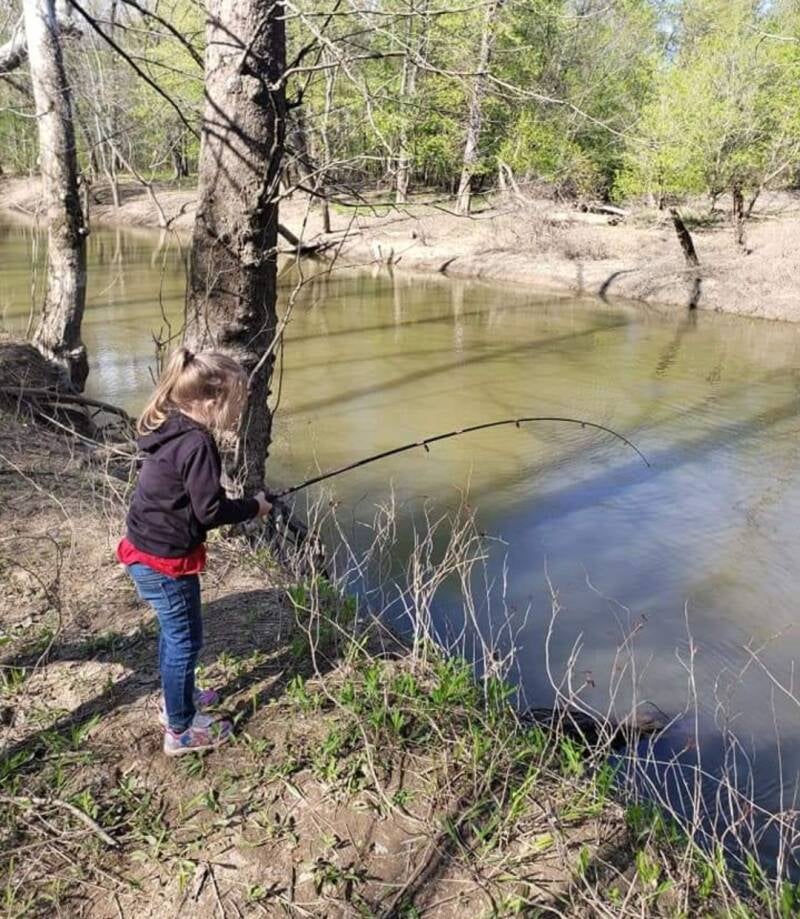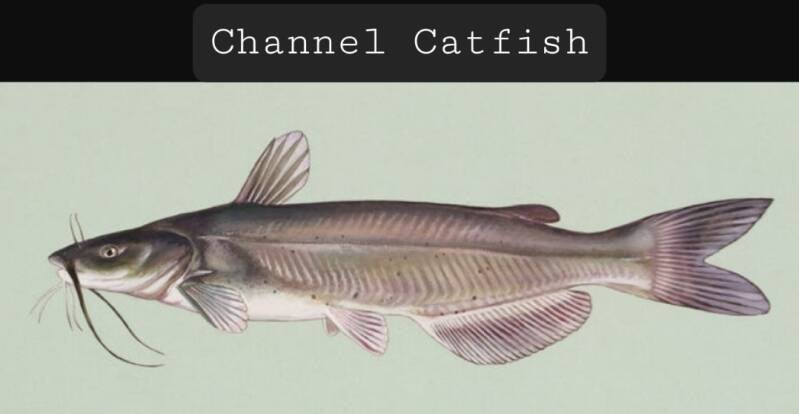A lot of my fondest memories as a child were formed catfishing rivers with my grandpa. Whether it was in Hunting Creek or the Patuxent River in Maryland to the Muscatatuck and Ohio rivers in Indiana. If I wasn’t in school, we were on the river somewhere. As a child there was no better feeling then seeing your rod tip twitch a couple times, and Bam, the rod bends over and the drag begins to scream. My grandpa would start yelling “Fish! Fish!” while I scrambled and slid in the mud towards the pole. A few moments later with my forearms burning, we’d land the catfish and be ready to cast back out. To this day, catfish are still one of my favorite fish to target, especially if my daughters want to catch “big fish” or the freezer needs filling.

Channels, Blue catfish, and flatheads are the three primary species mostly targeted in the United States. Almost all rivers, lakes, and reservoirs have at least one of these species. Everyone you speak with will have opinions on which ones the best tasting or puts up the biggest fight. Flatheads are my favorite, but all three are fun to catch and make a flavorsome meal. When fishing in rivers for catfish it is important to understand the differences in each species characteristics and behaviors.
Channel Catfish
The most common and smallest of the “big three” channels average size is from 3-20 lbs. with the world record being 58 lbs. Channel catfish are opportunistic and aggressive eaters. They are the least picky when it comes to their diets and are often caught on almost anything including hotdogs, shrimp, stink-bait, worms, and even soap. Channels begin moving from their deep winter holes when the water temperature reaches about 60° and will start spawning when the water temperatures reach the mid 70° mark. Channel catfish enjoy any waterway but seam to prefer river locations with low to moderate current.

Blue Catfish
The monsters of the freshwater world blue are commonly caught over 50 lbs. with the world record coming in at a whopping 143lbs. Blue catfish are pickier eaters than channels and prefer live or cutbait from oily fish like skipjack or shad. Like channel catfish they begin spawning when the water temperatures reach the mid 70°s. Blue catfish are found in larger rivers and prefer laying below a fast current during the day and moving into a slower current at night when hunting for food.

Flatheads
Slightly smaller than the blue cats are the flatheads that can still reach over 100 lbs. The record flathead is 123 lbs. Of the “big three” flatheads are the pickiest eaters once mature and prefer live baitfish. Live bluegill (where legal) about 6”-8” are commonly used to target them. Flatheads will begin spawning slightly before the others when the water reaches the mid 60°s to 70°s. Like blue cats they prefer larger rivers and tributaries. Flatheads often stay in deep holes with lower currents during the day and venture into the shallows at night to feed.

Seasonal Habits
Catfish are migratory fish that move up and down the river throughout the year. During the colder months catfish especially, flatheads like to stay in the deepest holes they can find with nearby food sources. These holes are often found near the mouths of adjoining rivers or outside riverbends where the current has slowly dug out the bottom but offers nearby shallows for food. During the winter months catfish seldom roam far and prefer to stay near their holes.
Early Spring to mid spring is when catfish will begin moving from their holes and hanging out in shallower warmer mudflats. Becoming more aggressive and feeding at night. While during the day hiding in small holes in the banks or behind submerged objects to ambush prey as it passes by.
Mid to late spring (pre-spawn) makes for some of the best catfishing. The warmer water kick starts their metabolism, and the males begin fattening up for their 6-10 day fasting while fanning and guarding their nest.
Summertime After the spawn male catfish look beat-up and skinny after fanning and guarding the nests for the last couple weeks. They are also hungry and at their most aggressive feeding state. Actively searching for their next meal and traveling the river. Summertime night fishing is a prime time to catch a lot of catfish.
As the water begins turning cooler in the fall, catfish will start heading back towards their winter hideouts, often the same hole as the year before. Preparing for winter also means fattening themselves up. They are often located near drop offs or along rip rap. Bridges make excellent fall catfish hangouts due to the narrower waterway between supports funneling baitfish and increasing the current creating holes. Many bridges often have areas of rock to prevent erosion and creates areas of rip rap.
Nighttime Fishing
Catfish are nocturnal and do most of their feeding at night in the shallows. (Excluding winter when they stay deep and feed more during the day during warmer hours) Fishing close to the bank at night or areas where light shines on the water attracting insects and baitfish are prime locations for large catfish. Many catfish have been caught during a warm summer night on the rivers edge with a small campfire burning, cold beverage in hand, and a pole in the water. The most important thing with nighttime fishing is being prepared and safe. A back-up light source and extra bug spray can save an outing from turning bad.
Catfish Techniques
River catfish can be caught in many ways. A few of the more popular techniques include drifting, trotlines, limb lines, and of course rod and reel. When filling a freezer, a combination of these can land a lot of fish in a single trip.
Drifting
Drifting involves dragging your bait while the current or wind moves your boat downstream. It is a technique often used while fishing during the day to locate catfish when they’re less mobile, and you need to cover more water. Drifting is a done very slowly, and often drift socks are used to keep your boat from traveling too fast. You can also “drift fish” from shore with a smaller weight by casting upstream and allowing the current to drag your bait downstream.
Trotlines
Trotlines are a single heavy duty nylon line that is stretched from one point to another in the river with leaders and baited hooks attached every few feet. (Be sure to check your states regulations regarding trotlines) When building a trotline, it is important to use barrel swivels to attach the leaders as catfish will roll when hooked and can tangle a line easily. As a child I would make a trotline with only 5 or 6 hooks. This allowed me to tie a half a brick to one end and toss it into the river from shore. I would set the trot line at dusk and check it before first light, where it was not uncommon to have 2 or 3 fish on a single line.
Drop-line/limblines
Limblines are also a good way to fill a freezer. Like trotlines they are usually made with a heavy nylon string, but they only consist of a single hook and a weight. (Like trotlines check your states regulations regarding limblines) Limblines are tied to over hanging tree’s and should be checked every few hours during the day or before first light if setting them in the evenings.
Rod and Reel
The fun and traditional technique to catch catfish the simple rod and reel. They can be used from drifting, jigging, to simply casting your line out and waiting. It is important to choose a rod and reel combo suited for the technique and size catfish you are targeting. Fishing smaller rivers where a 20-30 lb. fish will be the largest you may catch, a 7’ MH combo with 25 lb. line works great. In rivers like the Ohio or Missouri you may want to invest in a surf rod or saltwater combo with closer to 50 lb. line.
Catfish Rigs
It is important to choose the correct rig for the conditions you are fishing. Current speed, river bottom, and underwater structure will be variables to consider. Four of the most popular catfish rigs for rod and reel fishing are the slip-sinker rig (Carolina), Scantee Cooper rig, slip-bobber rig, and the 3-way rig. Each of these rigs offer pros and cons in different conditions.
Carolina Rig – This is probably the most used rig for catfish. It allows finicky fish to swim away after taking the bait without feeling the weight. A Carolina rig is set-up by sliding an egg slip sinker on the main line with an attached barrel swivel and 18”-36” leader. Carolina rigs are not the best in fast current areas or with larger live bait.
Santee Copper Rig- Similar to the Carolina rig, but with an added float on the leader to keep your bait off the bottom of the river. An excellent option when fishing backwaters or areas with a slow current.

Slip-bobber rig – slip-bobber rigs are used more in ponds and lakes but can be used in rivers areas with no or very little current. They are sometimes used closer to the bank near a drop off to keep your bait suspended at a certain depth.
3-way rig – The most popular rig for river fishing when the current or underwater structures could be an issue. The 3-way rig is excellent for fishing with live baitfish, when drifting, or with enough weight in higher current waters. The rig is made by tying a 3-way swivel to your main line, and then tying a leader with a weight and a leader with a hook to the other two points of the swivel.

Catfishing rivers is an amazing way to get out and enjoy nature whether from shore or a boat. It is a chance to make memories with your family, friends, or enjoy the solitude nature has to offer. All while providing for a delicious meal for back home.
If you enjoyed this article please check out my others (by clicking here)
If you’d like to stay up to date on all new content and articles relating to everything outdoors you can join our Facebook group by (clicking here.)

Add comment
Comments